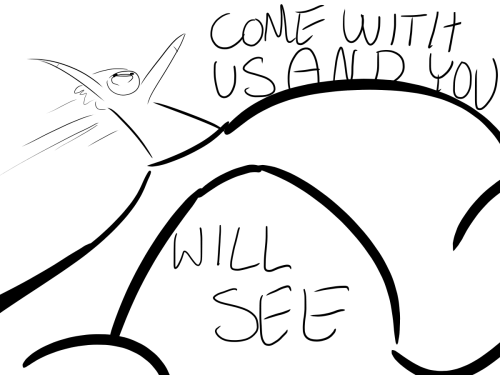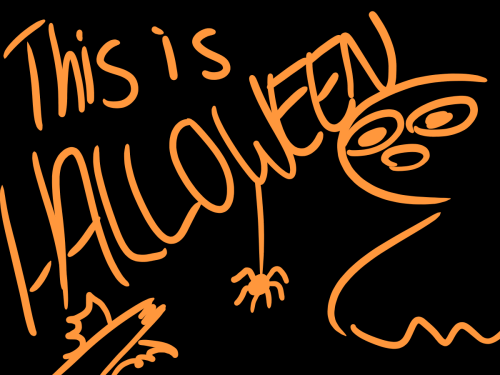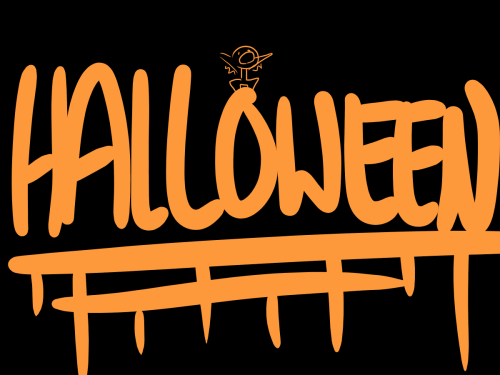Demeter And Dionysus, From "Mythology" By Edith Hamilton, Illustrated By Steele Savage.

Demeter and Dionysus, from "Mythology" by Edith Hamilton, illustrated by Steele Savage.
More Posts from Saintedsorcery and Others


🌳










:/
Hellequin: leader of the Wild Hunt and Fairy King

The “familia Herlequini” or “la mesnie Hellequin” is a term which, as Claude Lecouteux has shown in “Phantom Armies of the Night”, might encompass a wide variety of disparate phenomena, such as the wild hunt (die wilde Jagt) and the wild horde (das wilde Heer). The familia Herlequini represented a troop of the dead: the earliest explicit reference to the familia Herlequini is in Orderic Vitalis’s Ecclesiastical History (1130s).
Orderic told the story of a Norman priest called Walchelin, who describes his encounter on New Year’s night in 1091 with a mysterious procession of knights, ladies, priests, monks, and commoners, “like the movement of a great army,” among whom he recognized “many of his neighbours who had recently died.” At one point Walchelin says to himself, “Haec sine dubio familia Herlechini est” [Without a doubt this is Herlequin’s household]. At one point Walchelin grabs one of their horses by the reins and experiences an intense burning, and at another, one of the knights seizes him by the throat, leaving a scar which he carries to the grave. All the members of the procession suffer penitential torments for their former sins: one of the knights, for instance, tells Walchelin: “The arms which we bear are red-hot, and offend us with an appalling stench, weighing us down with intolerable weight, and burning with everlasting fire”.
In this description, Herlechinus appears as a giant who raise a huge club.
The other early description of Herlequin’s ride, written some fifty years later, is from Walter Map’s “De Nugis Curialium”. Here a Welsh king called Herla encounters a diminutive Pan-like creature who predicts his future marriage and then strikes a bargain with him: he will attend Herla’s wedding on condition that the king help him celebrate his own wedding a year later. This creature, who is never named, turns out to be royal and shows up at Herla’s wedding with a splendid retinue bearing lavish gifts. The return visit, which involves passing through “a cave in a high cliff”, is equally successful, but when the time comes for him to leave, Herla’s host presents him with a small dog, with the instruction that none of his retinue is to dismount until the dog jumps down to the ground. He returns to his kingdom only to discover that hundreds of years have passed. Inevitably, some of his company dismount before the dog jumps down and are promptly turned to dust: “The King, comprehending the reason of their dissolution, warned the rest under pain of a like death not to touch the earth before the alighting of the dog. The dog has not yet alighted. And the story says that King Herla still holds on his mad course [circuitus vesanos] with his band in eternal wanderings, without stop or stay”. Later, Map refers to this band as “phalanges noctivage quas Herlethingi dicebant” [night-wandering battalions which they say are Herlething’s] or simply the “Herlethingi familia” [Herlething’s household].
Moreover, in a late thirteenth-century poem on confession, the priest is instructed to ask, “Creïs tu … / Ne [le luiton] ne la masnée / Herllequin, ne genes ne fees?” [Do you not believe … in the goblin, in the household of Herlequin, in witches, and fairies?], and an early fourteenth-century Dominican redaction of the Elucidarium, known as the Second Lucidaire, makes a similar association when it speaks (in the early sixteenth-century English translation) of “elues, gobelyns, & helquins þe whiche men se by nyght, as men of armes trottynge on horsebacke with grete assembles.” Another fourteenth-century author, Raoul de Presles, commenting on Augustine’s discussion of incubi demones in The City of God, recommends that his readers consult William of Auvergne on the topic, “and also he speaks in that place of Hellekin’s household and of Dame Habonde and of the spirits that they call fairies, which appear in stables and woods”. Finally, when the author of Richard the Redeless, referring no doubt to the duketti created by Richard II in 1397, writes, “Oþer hobbis Ϟe hadden / of Hurlewaynis kynne,” he explicitly associates Herlequin with hobs or fairies.
In Adam de la Halle’s brilliant farce “Le Jeu de la feuillée” (ca. 1255), the action of the play takes place in Arras on a feast day (perhaps May Day or possibly Midsummer’s Eve) and concerns a banquet held in honor of the fairies. The sound of bells leads a character called Gillot to anticipate the imminent arrival of “le maisnie Hellekin,” and when another character asks, “will the fairies be following him?” [venront dont les fees après], Gillot assures her that they will. In the event, Hellequin himself does not appear but later sends a messenger to Morgan (one of the three fairies who do) with a love letter; at first she spurns his offer, but after learning that her current beau, the Arrageois Robert Sommeillons, has been cheating on her, she regrets having rejected so peremptorily “the greatest prince in fairyland” [le graigneur / Prinche ki soit en faerie]. He is described, therefore, as a king and shown to be in some sense the leader of a fairy troupe.
How to start worshipping Hellequin?
See:
- https://elegantshapeshifter.tumblr.com/post/170758896566/historically-attested-offerings-for-the-major
- https://elegantshapeshifter.tumblr.com/post/171876985371/how-to-make-offerings-to-the-major-spirits-ie
- https://elegantshapeshifter.tumblr.com/post/171332375001/the-sabbath-or-ludus-bonae-societatis#notes
Sources:
- Richard Firth Green’s “Elf Queens and Holy Friars: Fairy Beliefs and the Medieval Church”
- Carlo Ginzburg’s “Ecstasies: Deciphering the Witches’ Sabbath” and “Night Battles: Witchcraft and Agrarian Cults in the Sixteenth and Seventeenth Centuries” - Jacob Grimm’s “Teutonic Mythology” - Claude Lecouteux’s “Phantom Armies of the Night: The Wild Hunt and the Ghostly Processions of the Undead” - Karl Meisen’s “Die Sagen vom wüttenden Heer und wilden Jäger” (paradoxically there is a translation in Italian but not in English) - Wolfgang Behringer’s “Shaman of Oberstdorf: Chonrad Stoeckhlin and the Phantoms of the Night” - Emma Wilby’s “Burchard’s strigae, the Witches’ Sabbath, and Shamanistic Cannibalism in Early Modern Europe”, “Cunning-Folk and Familiar Spirits” and “The Visions of Isobel Gowdie” - Eva Pocs’s “Between the Living and the Dead”, “Fairies and Witches at the Boundary of South-Eastern and Central Europe” and “Traces of Indo-European Shamanism in South East Europe”.
Some UPG, as a treat…
So angels (or the beings we refer to as angels) are the architects of creation. By their very nature they form reality out of the limitless potentiality. They form energy into matter, the take chaos and make it into order. This is instinctual and unconscious. They do it because it is what they are.
Daemons are the opposite of this. They are beings of decay and rot. I think of them almost like mushrooms. They thrive on and help speed up the entropy of reality. Matter to energy, order to chaos, again this is just what they are.
This is not a case of right it wrong, benevolence or malice. They are simply two ends on the spectrum of reality. They do not oppose each other as enemies but simply as opposites, doing their part in the grand scheme of things.
Korean Folk Magic (Herbs): Sogeum

Sogeum 소금 is salt! It is used in various household god rituals, including feeding Yongwang 용왕 and rites to prevent fires.
It is also used to purify spaces, chase out negative entities and repel bad luck.
There actually isn’t a lot that’s different with how korean folk magic uses salt. Because of its color (white) it is connected to purity. Because of salt’s effects on food (keeping it longer before spoiling) it is connected to dispelling misfortune.
We usually sprinkle it in all corners of the home to purify and cleanse before a rite.
소금 can also be used for offerings, primarily to certain Gashin 가신 (household gods) like Samshin 삼신, the Goddess of Childbirth.
Keep a small bottle or packet of salt on you at all times. If you suddenly get a bad feeling, sprinkle the salt in its direction.
"The forest did not scare her; rather, she wanted to be like it: ageless and impervious, cruel and beautiful. Death could not touch it."
-Emily Lloyd-Jones, The Bone Houses

Werewolf History Project: Prehistory-
First part of a project looking at the history of werewolves and werewolf myths! Starting with early prehistory and the emergence of stories, especially the advent of animal/human figures.
Why are Russia and China so big? Don't worry about it, that just happened during the big bang. They just spawned like that dude. Colonization only happens with America or something. Don't worry about it.

The Weaver by Ulysses3art

The Sabbat was held as the Mirror rode high and full. The stang was lit, the spirit amassed, and the Dragon awoken from within the deep heart of the flames. The mighty serpentine force rose higher and higher as the mill was trod, the whole of the compass becoming bathed in the pale light of the vibrant stars bespekling the great black mare and the eldrich spirits attending the holy rite.
The sacred paint was enchanted and made manifest with blood, wort, and oil in the mysterious rites of the black cauldron. Then used to inscribe the first sigilum upon the brow of the beast, the witch’s hand guided by the dark whispers of the unknown ones.
The bestial, raw, and primal Scarlet King was beckoned forth, drawn toward the ensourceled goat skull at the base of the Great Tree. The hissing flames announced his arrival, the eyes opened and gazed upon us, and thus did He begin to speak…
Soon, I feel, shall the next sigilum be enscribed upon his ivory skull. Thus shall we continuing to therein enflesh the luminious bestial form and bring forth the great King to the Witches’ Sabbat.
-
 lolkish liked this · 3 months ago
lolkish liked this · 3 months ago -
 30fury reblogged this · 1 year ago
30fury reblogged this · 1 year ago -
 allfortheloveofastory reblogged this · 1 year ago
allfortheloveofastory reblogged this · 1 year ago -
 anataraxia reblogged this · 1 year ago
anataraxia reblogged this · 1 year ago -
 lollynope liked this · 1 year ago
lollynope liked this · 1 year ago -
 rotfielder liked this · 1 year ago
rotfielder liked this · 1 year ago -
 thingshavechangedbobby liked this · 1 year ago
thingshavechangedbobby liked this · 1 year ago -
 artemis-potnia-theron liked this · 1 year ago
artemis-potnia-theron liked this · 1 year ago -
 orion-and-the-grapevine reblogged this · 1 year ago
orion-and-the-grapevine reblogged this · 1 year ago -
 bataneye liked this · 1 year ago
bataneye liked this · 1 year ago -
 bubastiss liked this · 1 year ago
bubastiss liked this · 1 year ago -
 neon-nightmare liked this · 1 year ago
neon-nightmare liked this · 1 year ago -
 motrdawg liked this · 1 year ago
motrdawg liked this · 1 year ago -
 jerseyd3vil liked this · 1 year ago
jerseyd3vil liked this · 1 year ago -
 goetiae liked this · 1 year ago
goetiae liked this · 1 year ago -
 pearlsandpetticoats liked this · 1 year ago
pearlsandpetticoats liked this · 1 year ago -
 ripplefactor liked this · 1 year ago
ripplefactor liked this · 1 year ago -
 mothertheresa8 liked this · 1 year ago
mothertheresa8 liked this · 1 year ago -
 romulousofatlantis liked this · 1 year ago
romulousofatlantis liked this · 1 year ago -
 betterthanakickintheface reblogged this · 1 year ago
betterthanakickintheface reblogged this · 1 year ago -
 avelona reblogged this · 1 year ago
avelona reblogged this · 1 year ago -
 murnswhyte reblogged this · 1 year ago
murnswhyte reblogged this · 1 year ago -
 murnswhyte liked this · 1 year ago
murnswhyte liked this · 1 year ago -
 444-cloud reblogged this · 1 year ago
444-cloud reblogged this · 1 year ago -
 juadsol81 liked this · 1 year ago
juadsol81 liked this · 1 year ago -
 lavenderhottie liked this · 1 year ago
lavenderhottie liked this · 1 year ago -
 cowchoptrash liked this · 1 year ago
cowchoptrash liked this · 1 year ago -
 selph liked this · 1 year ago
selph liked this · 1 year ago -
 dreadpirate-persephone reblogged this · 1 year ago
dreadpirate-persephone reblogged this · 1 year ago -
 l0ggia liked this · 1 year ago
l0ggia liked this · 1 year ago -
 jedidajo reblogged this · 1 year ago
jedidajo reblogged this · 1 year ago -
 voluptuarian liked this · 1 year ago
voluptuarian liked this · 1 year ago -
 fawndrawsstuff liked this · 1 year ago
fawndrawsstuff liked this · 1 year ago -
 an9elsoft liked this · 1 year ago
an9elsoft liked this · 1 year ago -
 nib333 liked this · 1 year ago
nib333 liked this · 1 year ago -
 bottomlurker reblogged this · 1 year ago
bottomlurker reblogged this · 1 year ago -
 bottomlurker liked this · 1 year ago
bottomlurker liked this · 1 year ago -
 sedatedswan liked this · 1 year ago
sedatedswan liked this · 1 year ago -
 rube-de-leon reblogged this · 1 year ago
rube-de-leon reblogged this · 1 year ago -
 maggots-in-the-veins liked this · 1 year ago
maggots-in-the-veins liked this · 1 year ago -
 porcelainapparition reblogged this · 1 year ago
porcelainapparition reblogged this · 1 year ago -
 porcelainapparition liked this · 1 year ago
porcelainapparition liked this · 1 year ago -
 fouldevil reblogged this · 1 year ago
fouldevil reblogged this · 1 year ago -
 danephere reblogged this · 1 year ago
danephere reblogged this · 1 year ago -
 bonez-soup liked this · 1 year ago
bonez-soup liked this · 1 year ago -
 wolfprayers reblogged this · 1 year ago
wolfprayers reblogged this · 1 year ago
